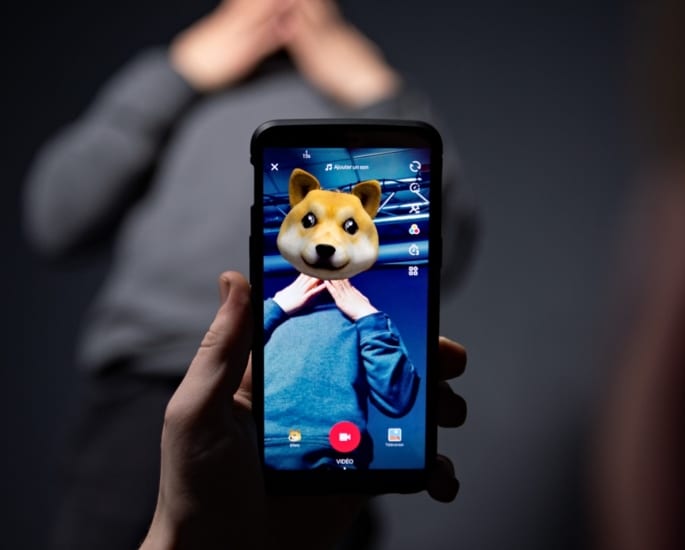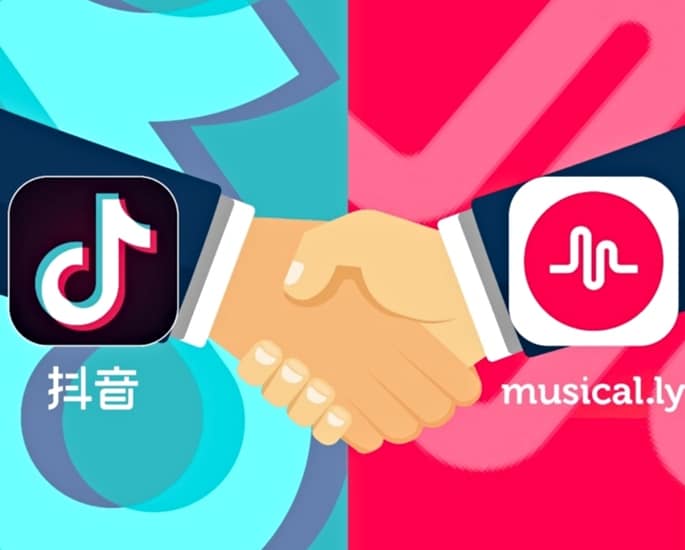It is a free app and very user-friendly
Social media has had a huge impact on the world, however, the application ‘TikTok’ is the newest thing that has got millennials in a frenzy.
It is an app used for making and sharing short videos. It sounds simple enough but this app has become extremely popular ever since it was introduced to the world in 2017.
TikTok is considered as an invigorating outlier in the social media world that is fun to use. It is especially enjoyed by younger audiences.
Video creators make short clips which are usually quirky, users of the app can then view the videos and share them with others on the app or on other social platforms.
Video clips have a watermark that reads TikTok and videos are navigated by scrolling up and down, like a feed.
It tailors video clips to your interests and previous views which make it stand out from other apps. As a result, it has become extremely popular.
TikTok’s parent company ByteDance is valued at more than £56 billion and the app has been downloaded 800 million times worldwide, according to data from mobile research firm Sensor Tower.
But what makes this app “a refreshing outlier in the social media universe” that’s “genuinely fun to use”.
We look at TikTok’s origins and it’s popularity in South Asia.
What is it?
TikTok is probably the first social app since Snapchat that has enjoyed a meteoric rise. It is no surprise that the general Snapchat user is a teenager or young adult.
It is a free app and very user-friendly with a wide range of prompts and reasons it provides.
The mobile app allows users to create a short video of themselves which usually features music in the background. They can be sped up, slowed down or edited with a filter.
Users can even create a music video with the app by choosing background music from a variety of genres and adding it to a created video.
It is then uploaded to share with others on TikTok or other platforms. Users can also film their reaction to a video, thanks to the app’s “react” feature.
Many videos are enjoyable to watch with most content being of a humorous nature.
To many users, it may seem like TikTok is a combination of existing apps featuring only the most engaging elements.
From the surface, that may be true as it appears friend feed centric, people can be followed and unfollowed and there are similarities to Instagram and Snapchat.
However, there is one major difference because TikTok is more machine orientated than man.
We often spend more time with apps as they have become more confident and less personally human.
TikTok works through artificial intelligence (AI) and it adjusts your feed to your personal interests. For example, when the app is opened, there is a page called “For You”.
It is an algorithmic feed built on videos that you have watched before. As it is AI operated, it will never run out of material unless you train it to be.
Instead of human editors, it relies heavily on AI to curate and create customised streams of content that is tailored to every user.
TikTok is full of things that you seem to have shown you want to watch. It is constantly learning from you and starts making video assumptions for you once the app is opened.
For this reason, the app stands out from other video-based platforms, therefore, it is no surprise that it has become one of the most popular apps out there.
Who Made it?
TikTok is owned by Chinese Internet technology company ByteDance and was launched as Douyin in September 2016.
Douyin was developed in 200 days and in just one year, there were 100 million users and over 1 billion videos watched each day.
It continues to be known as Douyin in China but it was introduced to the overseas market as TikTok in 2017.
It is one of the most popular of may short video-based apps in the country. This is a technology subsection that has evolved to compete with the American industry.
The rapid evolution is a positive especially because Instagram is banned in China.
ByteDance is its parent company and is mainly an artificial intelligence company. They spent £750 million to purchase musical.ly, a social network built around lip-syncing and dancing which targeted a teenage market.
TikTok merged with musical.ly in August 2018 to create a larger video community, with existing accounts and data merged into one app.
It has since become the leading short video platform in Asia, the United States and other parts of the world.
In October 2018, TikTok was the most downloaded app in the United States.
TikTok is also very popular in South Asian countries such as India.
Popularity in South Asia
The popularity of TikTok is evident in India, with almost 250 million downloads coming from the country.
In January 2019, 43% of new users were from India, this is an increase of nine-and-a-half per cent compared to January 2018.
Its popularity is fuelled by the giant smartphone market in India. The low cost of smartphones also contribute as cheaper phones means more users.
Entertaining videos have drawn in 20 million active users each month. What sets TikTok apart from other social media apps in India is accessibility.
It is available in Indian languages, making them easier to use than Facebook or Instagram.
Because of its immense popularity, Facebook has taken a page out of their book to compete.
They have brought in top music labels including T-Series, Zee Music Company and Yash Raj Films in order to use in social experiences.
Videos, messages, stories and other creative content have been incorporated to engage viewers.
TikTok’s largest market is India and they continue to increase in popularity as a result of the engaging content.
TikTok is still quite a new thing so it has to win some people over, but its fast rise is impressive.
It questions the predominance of individual connections and friend networks. It openly showcases the AI technology that is used to tailor user preferences.
TikTok does have some similarities to other apps but its unique features make its impact a big one.
While much of the content is quite spontaneous, it is entertaining for users and makes it a trend that continues to grow and cause a frenzy among viewers.
































































